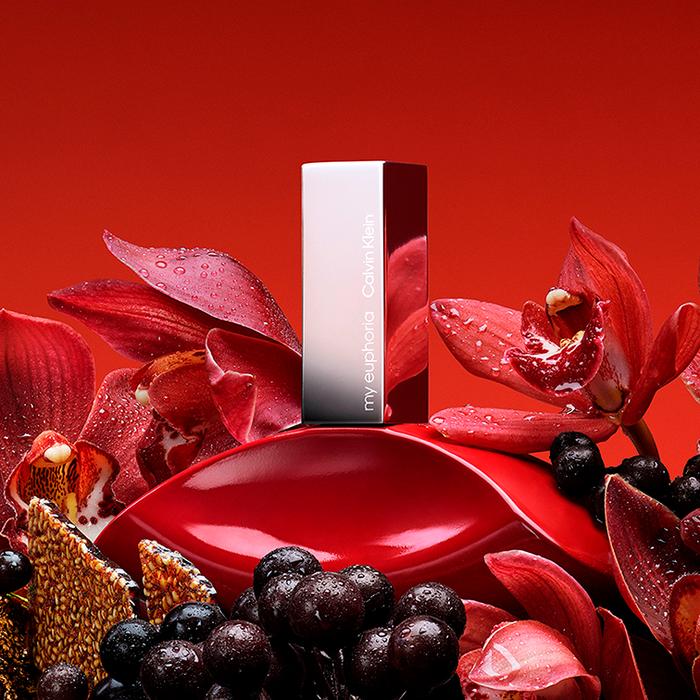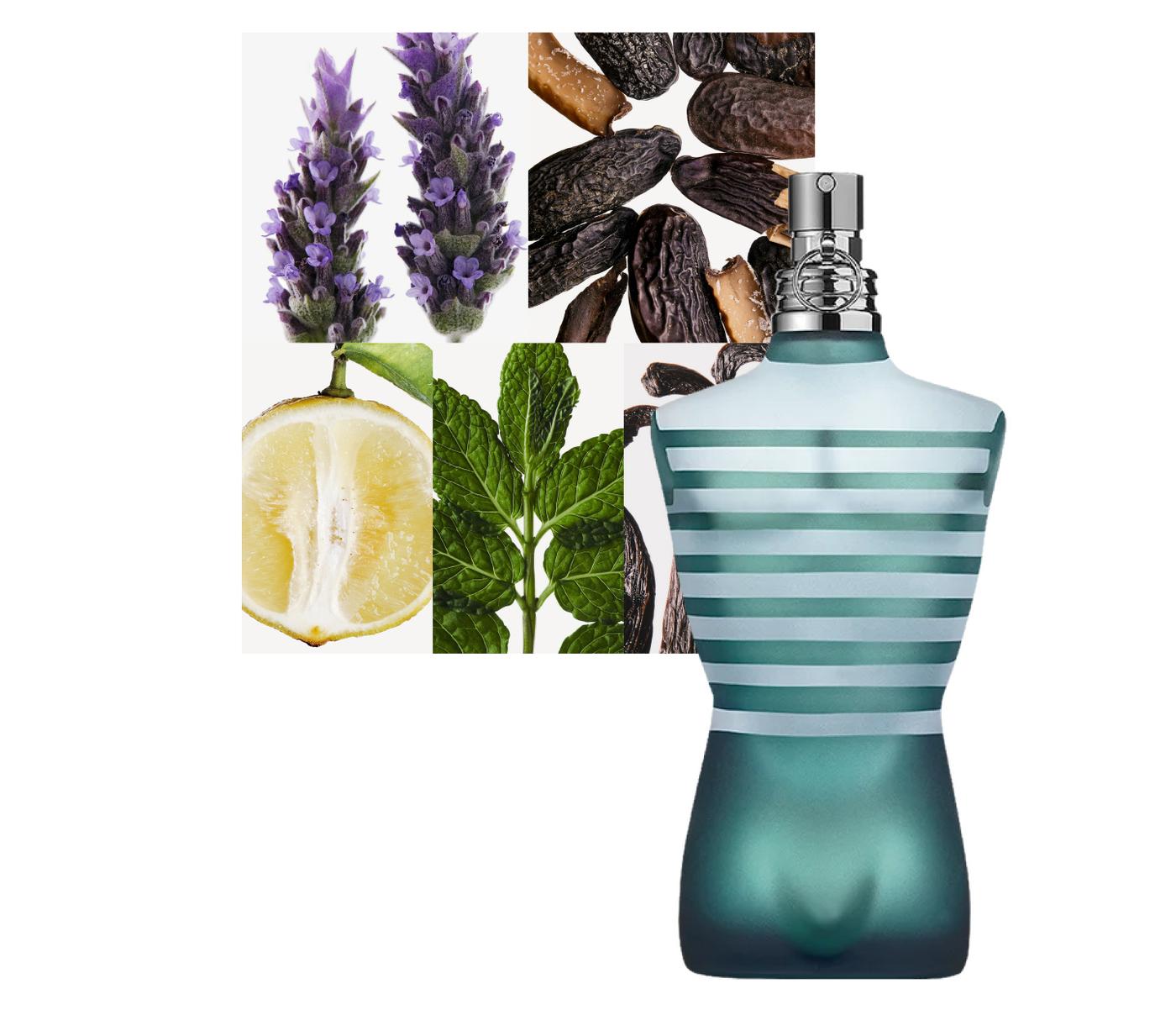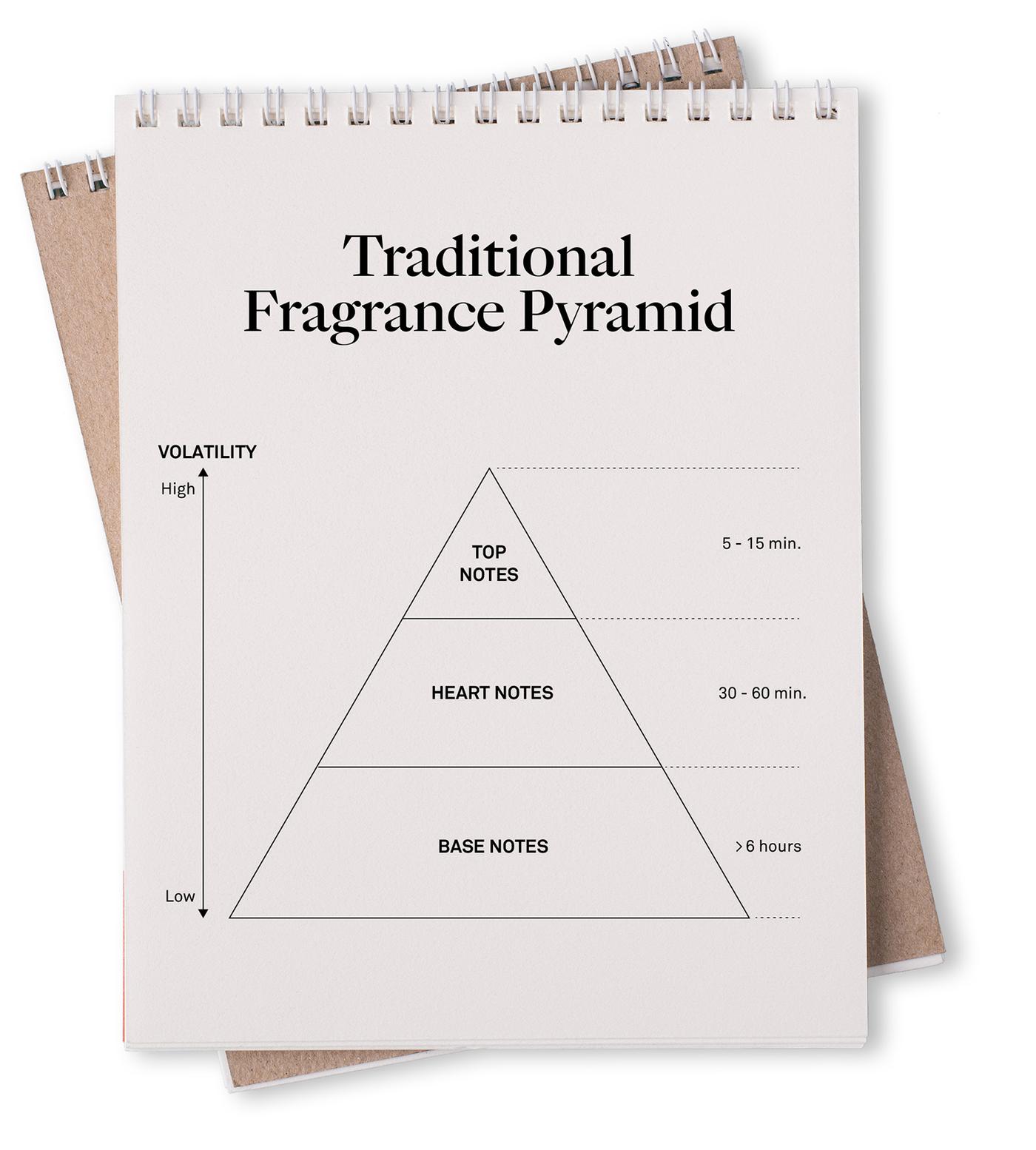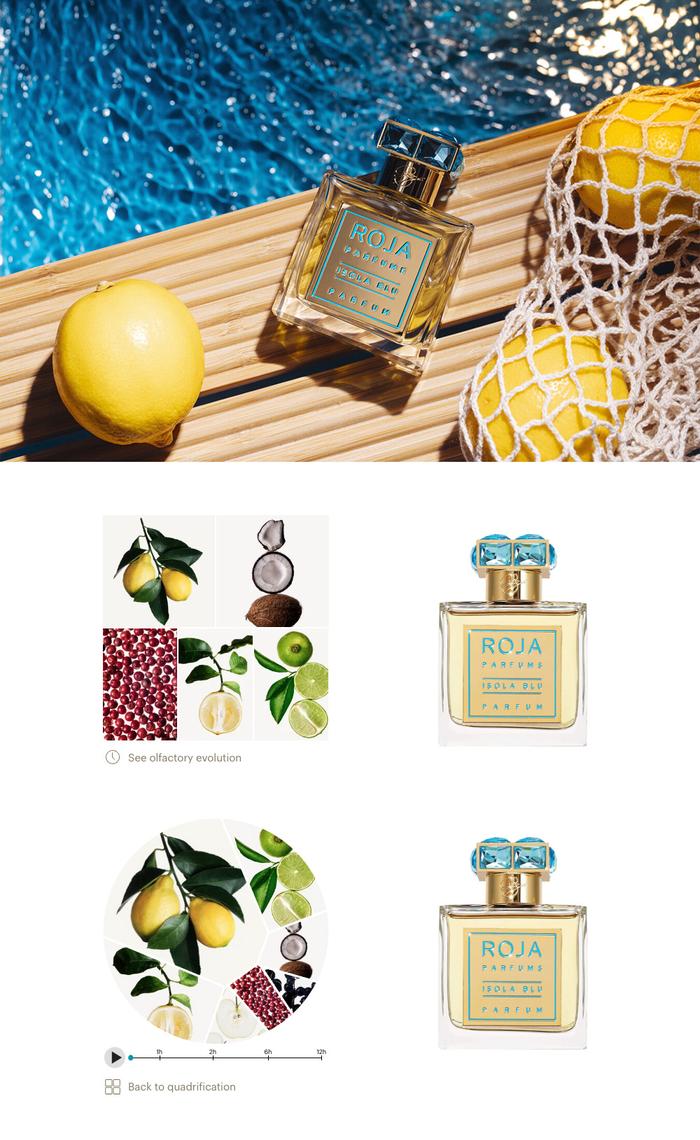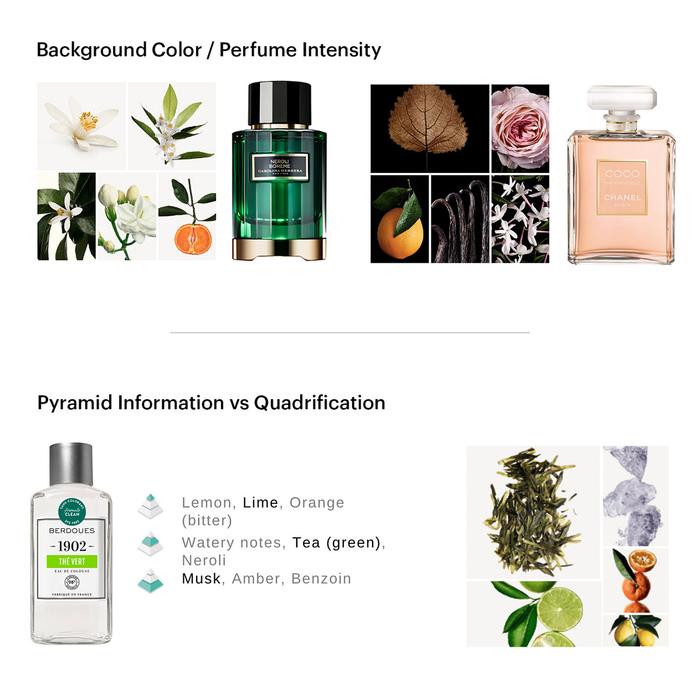The scent of perfume is the primary purchase attribute. According to a Kantar consumer survey, 84% of consumers choose perfume solely on fragrance rather than brand (45%) or price (40%).
For this reason, quadrification is a useful tool for finding a perfume you like before you smell it. With an average of 2,000 perfume launches per year, perfumery is one of the most dynamic and innovative markets. But this hectic pace of novelties makes it impossible to keep up with all the new fragrances arriving in the shops… You have to select and try, even if you only get to try a few.
Quadrification allows you to visualise the most dominant ingredients that make up the perfume (based on the information provided by the brands), to get a sensory and intuitive impression of the fragrance. Even if you only see at most the five most important ingredients, in the text that accompanies each image you can expand the information and find out more about all the ingredients that make up the fragrance formula.
Before you make a fragrance tasting, how can you make your selection based on your own personal criteria? We must bear in mind that, in order not to saturate our sense of smell, we must not overdo it when smelling perfumes. Le Secret du Marais, a Madrid-based perfumery specialising in signature brands, advises us to opt for tastings of a maximum of seven perfumes, although we recommend no more than five.
But how do we arrive at this selection of five perfumes for a tasting? If you are a fragrance lover, the quadrification will help you to identify and visualise the olfactory characteristics of the perfume. You will then be able to see whether the perfume is dominated by citrus, floral or woody notes and select only those that match your preferences
